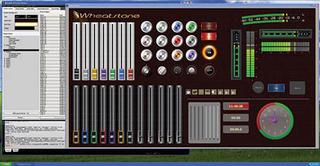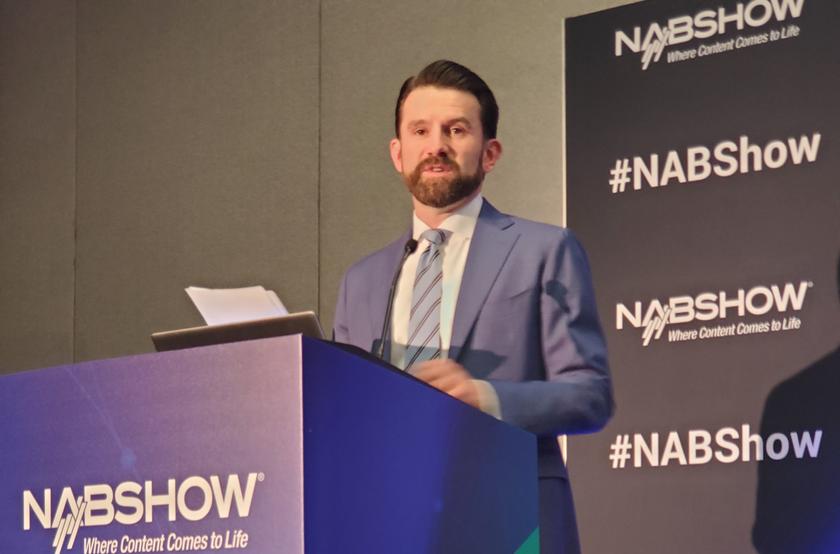Wheatstone Promotes IP Audio Advances

Wheatstone’s WheatNet-IP ScreenBuilder software app allows end users of the company’s AoIP networks to simply drag and drop graphic icons to build custom control screens, letting them run the system to their own requirements.
LAS VEGAS—As any experienced engineer knows, managing a seamless audio stream is a vital component in a successful broadcast, particularly when that broadcast is live.
Wheatstone has taken that challenge to heart, and is introducing a new slate of technologies at the NAB Show that allow for this key factor to be smoothly addressed and automated in a live broadcast scenario. At its booth in the Central Hall, Wheatstone will address the issue of audio broadcasting with a suite of IP and control technologies that streamline and strategize the use of audio in the studio.
Wheatstone will introduce four new products that address the range of markets, from small to the high-end, according to Jay Tyler, director of sales for the New Bern, N.C.-based company. “All of these are IT control surfaces that will do all the traditional inputs and outputs that stations need in every format,” he said. “Just because you’re in market 65 or 74 doesn’t mean you don’t deserve top-of-the-line technology.”
THE IP DIRECTION
From large stations using IP audio technologies to smaller markets sharing news facilities and creating news duopolies, IP audio is playing a more important role, Tyler said.
When it comes to live production, audio can be a difficult animal to deal with, and IT technology offers benefits that just don’t exist in an analog environment, with a reduction in costs, hardware and labor. And that’s not even considering the improvements in workflow.
“For workflow, you can have a live on-air console, and then have someone come in and grab their own show and produce something different,” Tyler said. “You can reconfigure these rooms and booths to do a variety of operations. For duopolies, where they might be sharing a control room, [IT technology] cuts down on room size, equipment costs and cuts down on HVAC, which consolidates your racks.
Get the TV Tech Newsletter
The professional video industry's #1 source for news, trends and product and tech information. Sign up below.
“Everything is heading the IP way,” he said, including future Wheatstone products.
At NAB, Wheatstone is introducing several consoles, new networking technologies as well as new ways of handling live production using IP audio control.
LEGACY MIGRATION
The company also is showcasing the Gibraltar engine, an IP engine that will plug into any legacy product and allow an older digital television console to be connected to an Ethernet switch. “Now you’ve migrated your 10-year-old console into IP audio,” Tyler said. “Not every [station might be] ready to take the leap, but if you want to dip your feet in the IP pond… we’ve got a migration path.”
Wheatstone is also making it a priority to support AES67, a new protocol for audio-over-IP interoperability, which will allow more technologies to interconnect with peripheral gear. The company recognizes that IP audio control is becoming ever more important in live television for several reasons, including the growing number of duopoly news operations.
Towards this end, Wheatstone is demonstrating its Wheatstone WheatNet-IP audio control system, which allows broadcasters to turn a mic into an intercom between the talent and director and set up a reverse IFB command for mics or headsets that can be triggered via an IP audio console. The technology also addresses the issue of mono summing and signal splitting. For those sources that arrive in stereo, the WheatNet-IP audio control system can be used to mono sum and level match for those routing through a studio.
Wheatstone also is demonstrating a new joint product integration with Eventide, whose BD600W delay unit now comes with WheatNet-IP networking built-in for seamless integration of profanity delay into the WheatNet-IP audio and control network. The BD600W provides 80 seconds of profanity protection, microprecision delay and combines both extended remote control and audio over the WheatNet-IP broadcast network.
The company is showing its “Screen Builder” app, which allows stations to customize their audio networks; the AirAura X3 audio processor; the FM-55 audio processor; and M4-IP mic processor.
Wheatstone also is displaying members of its Audioarts engineering consoles line, an IP system that is being used for production, news, podcating, LPFM or Web radio.
Wheatstone is in booth C755 in the Central Hall of the LVCC.
Susan Ashworth is the former editor of TV Technology. In addition to her work covering the broadcast television industry, she has served as editor of two housing finance magazines and written about topics as varied as education, radio, chess, music and sports. Outside of her life as a writer, she recently served as president of a local nonprofit organization supporting girls in baseball.











